 July 6, 2017 John E. Ross, KD8IDJ, Editor
| ||||||
ARRL CEO, Technical Relations Specialist Represent US at Pre-WRC-19 Session ARRL Technical Relations Specialist Jon Siverling, WB3ERA, and ARRL CEO Tom Gallagher, NY2RF, served on the US delegation to the Inter-American Telecommunication Commission (CITEL) Permanent Consultative Committee II (PCC.II) hosted by the US in Orlando, June 26-29. Approximately 170 delegates from 16 countries throughout the Americas attended the meeting. PCC.II serves as an advisory committee to CITEL, and the Florida session was part of the run-up to
World Radiocommunication Conference 2019 (WRC-19). Others defending Amateur Radio interests at the meeting included IARU Region 2 Secretary José Arturo Molina, YS1MS/KD2GXZ, and Flávio Archangelo, PY2ZX, who were delegates to WRC-15. "The most significant work of the delegates this week was in the Working Group on Preparation for Regional and World Radiocommunication Conferences, chaired by Carmelo Rivera of NOAA/Department of Commerce," Siverling said afterward. "This is the working group that will develop proposals from the Americas region to WRC-19." Siverling said that while it's still early in the process, the working group continued to identify delegates who will attend WRC-19 to serve as chapter chairmen and agenda item rapporteurs. The US proposed Siverling to serve as the alternate rapporteur for WRC-19 agenda item 1.1, "to consider an allocation of the frequency band 50-54 MHz to the Amateur Service in Region 1" in accordance with WRC-15 Resolution 658.
"This meeting also advanced the work to update the International Amateur Radio Permit (IARP) to allow administrations to process applications and issue the permit electronically, a requirement for many countries as they transition to eGovernment," Siverling said. IARU Revises Satellite Coordination Guidelines to Align with WRC-15 Decisions Starting on August 1, the International Amateur Radio Union (IARU) will follow revised guidelines for satellite frequency coordination. Educational satellite projects have grown in popularity as launch opportunities have increased. These satellites, constructed by students at universities and other institutions, generally have been licensed to operate in the Amateur-Satellite Service, which the International Telecommunication Union (ITU) Radio Regulations define as having the "purpose of self-training, intercommunication, and technical investigations carried out by amateurs...interested in radio technique solely with a personal aim and without pecuniary interest."
Some administrations have issued experimental licenses for such satellites operating in Amateur-Satellite Service bands. The IARU has coordinated these satellites as well, to reduce the possibility of harmful interference that might result from uncoordinated operation. Since July 1, 2014, however, it has not been possible to coordinate experimental satellites in the 144-146 MHz band, because of the high probability of harmful interference in this heavily used band. IARU will continue to coordinate satellites with combined amateur and non-amateur missions. It will only coordinate a non-amateur satellite if an administration directs in writing that it be operated in an Amateur-Satellite band under an experimental or other non-amateur license.
WRC-19 has been invited to consider steps to facilitate the deployment and operation of nanosatellites and picosatellites. Such satellites generally must use spectrum below 1 GHz for operational reasons. A global federation of national associations of radio amateurs in more than 150 countries, IARU has provided complimentary frequency coordination services for amateur satellites for many years. President Names FCC General Counsel Brendan Carr to Fill Vacant Republican Seat on Commission President Donald Trump has announced plans to nominate FCC General Counsel Brendan Carr, a Republican, to fill one of the two vacancies on the Commission. One FCC vacancy, to be filled by a Democratic candidate, remains in order for the Commission to be back to its full five-member complement. The president on June 14 named former Commissioner Jessica Rosenworcel, a Democrat, to fill one vacancy. No more than three members of the FCC may be of the same political party. FCC Chairman Ajit Pai released a congratulatory statement.
Democratic FCC Commissioner Mignon Clyburn said Carr would be "a great asset to the Commission, calling him "well respected on both sides of the aisle" and saying that he's "demonstrated a deep knowledge of the legal and policy issues facing the communications sector." Coming as he does from the Chairman's staff, Carr is expected to support Pai's efforts to reverse controversial "net neutrality" rules passed by the FCC's then-Democratic majority that would subject broadband providers to the sort of oversight that conventional telecommunication carriers have faced. Both Rosenworcel and Carr are expected to be confirmed by the US Senate. The Doctor Will See You Now! "APRS" is the topic of the latest (July 6) episode of the "ARRL The Doctor is In" podcast. Listen...and learn!
Every 2 weeks, your host, QST Editor-in-Chief Steve Ford, WB8IMY, and the Doctor himself, Joel Hallas, W1ZR, will discuss a broad range of technical topics. You can also e-mail your questions to [email protected], and the Doctor may answer them in a future podcast. Enjoy "ARRL The Doctor is In" on Apple iTunes, or by using your iPhone or iPad podcast app (just search for "ARRL The Doctor is In"). You can also listen online at Blubrry, or at Stitcher (free registration required, or browse the site as a guest) and through the free Stitcher app for iOS, Kindle, or Android devices. If you've never listened to a podcast before, download our beginner's guide. Band Plan Proposed for Eventual Amateur Radio Use of 472-479 kHz ARRL 630-Meter Experiment Coordinator Fritz Raab, W1FR, and LF/VLF enthusiast John Langridge, KB5NJD, have proposed a possible band plan for the pending 472-479 kHz Amateur Radio band. Raab said that once US radio amateurs are granted access to 630 meters, he would move stations operating under the blanket WD2XSH FCC Experimental (Part 5) license to 461-472 kHz. "This will clear the amateur frequencies, while allowing the experimenters to run unattended propagation beacons without using the limited bandwidth that will be available to amateurs," Raab explained in his spring 630-Meter Experiment Project Status quarterly report. "The new 630-meter band will have a very limited amount of spectrum (7 kHz)." On March 28, the FCC adopted rules that will allow secondary Amateur Radio access to 472-479 kHz and to 135.7-137.8 kHz (2,200 meters), with minor conditions. The issue now holding up amateur access involves a requirement to notify the Utilities Telecoms Council (UTC) of proposed Amateur Radio operation on either new band. The FCC says the Office of Management and Budget (under the Paperwork Reduction Act) must first approve the information-collection requirements in §97.303(g)(2). Procedures to meet the requirements are said to be still under development by UTC, which says it wants to avoid Amateur Radio interference to power line communication (PLC) systems used to manage the electrical power grid. No such interference has been reported during the extensive experimental operation on 630 meters and on 2,200 meters. According to Raab's quarterly report, he and Langridge prepared the 630-meter band plan that "based upon established patterns, separates different modes of operation, and harmonizes US amateur operations with those in Europe." The plan, which is still a proposal and has not been endorsed or adopted by ARRL, calls for using only narrowband modes -- with bandwidths of 150 Hz or less -- during nighttime operation. Under the plan, modes such as AM, SSB, and MCW would be discouraged after dark, except during special events. In the event a "wideband" mode were necessary, though, the signal should be confined to between 476 and 479 kHz. Read more. Ham Radio Aviator WB6RQN Reaches Halfway Point of Round-the-World Flight Texas radio amateur and pilot Brian Lloyd, WB6RQN, is right on schedule on his commemorative Amelia Earhart round-the-world flight. He reached Darwin, Australia in his airplane Spirit on July 1, in time to enjoy local hospitality as well as some Territory Day celebration events, including a fireworks display. Greeting Lloyd upon his arrival in Australia was Stuie Birkin, VK8NSB, who had been in contact with Lloyd on 20 meters while he was still aloft.
Following seven stops in Australia, Lloyd was scheduled to depart Sydney on July 6 for New Zealand. Lloyd will head out across the Tasman Sea to Auckland, New Zealand, and then the Pacific for Suva, a fly-over of Howland Island -- which has no runway -- and Hawaii. He planned to drop a wreath of flowers when he passes above Howland Island, in memory of Amelia Earhart. Howland was where the famed aviator and author and her navigator Fred Noonan are believed to have vanished on July 2, 1937. Before taking off from Miami on June 1, Lloyd estimated that the circumnavigation would take 2 months. To give his 1979 Mooney 231 aircraft additional range, he modified it to carry 150 gallons more fuel. He also equipped it with modern navigation equipment, long-range radio, and satellite communication gear. Because the flight involves some risk, special safety gear is part of his equipment ensemble. WB6RQN has been operating SSB on 17, 20, and 40 meters (18.117, 14.210, 14.346, and 7.130 MHz). -- Thanks to Jim Linton, VK3PC International Lighthouse Lightship Weekend Registrations Top 200 and Rising Registrations for the 2017 International Lighthouse Lightship Weekend (ILLW) have topped the 200 mark for the August 19-20 event. The ILLW is 20 years old this year, and with a bit more than 6 weeks to go, nearly 250 planned operations have registered throughout the world. During the annual event, Amateur Radio stations will be on the air from -- or in the immediate vicinity of -- various historic lighthouses and lightships in more than 25 countries. In past years, more than 500 stations in some 90 countries have taken part.
The Polish DX Club will mark the milestone anniversary as 3Z20ILLW, with six club members at the Jaroslawiec Lighthouse, Poland's oldest, on the Baltic Sea. In West Malaysia, the Borneo Amateur Radio Club will activate Tinagat Lighthouse for its first time, as 9M6SDX. Registration guidelines call for operating sites to be officially listed as aids to navigation. That could include a classic lighthouse or lightship with a Fresnel lens, fog horns, time ball towers, and lighthouses or lightships moved to museums. According to the ILLW site, "lights such as range lights, channel markers, skeletal towers, and breakwall lights will probably not be accepted." Registration for the event is not required, but it does let other participants know which lighthouses and lightships will be active.
Activity does not need to take place inside the structure itself. A Field Day-style setup at the light or other building adjacent to the light is sufficient. "Adjacent means next to or as close as possible," event guidelines explain. "The intention behind this requirement is that the station should have a visible presence to the passing public who may be visiting the lighthouse over the weekend. Permission to operate from a lighthouse/lightship should be obtained from the relevant authorities." -- Thanks to Jim Linton, VK3PC Vermont Radio Amateurs Putting Green Mountain State's Parks on the Air The Vermont Department of Parks and Radio Amateurs of Northern Vermont (RANV) are sponsoring "Vermont State Parks on the Air" until June 1, 2019. The activity is dedicated to Amateur Radio operation in Vermont's parks. Operation is open to all modes and all bands, although most recent operation has been on 40 and 20 meters. The event uses World Wide Flora and Fauna in Amateur Radio (WWFF) calling/operating frequencies: Phone: 3.744, 7.144, 14.244, 18.144, 21.244, 24.944, and 28.444 MHz; CW: 3.544, 7.024, 10.124, 14.044, 18.084, 21.044, 24.894, and 28.044 MHz.
"This program is a follow-up to the ARRL National Parks on the Air event," Bob Henneberger, KB1WXM, told ARRL. "We are hoping it catches on with Vermont hams and can be a regular ongoing event each summer. We encourage the backpackers working QRP as well as those setting up 500 W stations with dipoles 70 feet up in some tall trees." State parks encompassing mountain peaks can be simultaneously activated for Summits on the Air (SOTA) awards. Parks on the Air identifiers are on the WWFF website. Activators can list future park activations on the WWFF website or on the Vermont Parks on the Air Facebook page. Participants are encouraged to also submit logs to the Logbook of The World. Contact Henneberger for more information. Jamboree on the Air Marks 60 Years this Fall "60 Years Connecting Scouts" is the theme for the Boy Scouts' 2017 Jamboree on the Air (JOTA), set for October 20-22. JOTA Coordinator Jim Wilson, K5ND, said the theme "recognizes the start of the event in 1957 and commemorates its growth in participation and in the expanding communication channels that are activated on the third weekend in October." The official JOTA patch will be available by July 19. The JOTA-JOTI (Jamboree on the Internet) patch is available now.
JOTA participation last October was up from 2015's numbers. According to the final JOTA report, 10,761 Scouts took part -- an increase of more than 50% from a year earlier -- and the number of stations filing reports, at 267, jumped by 28% from 2015 (the record was 271 in 2013). The number of Amateur Radio operators was up by 14% to 1,120, although the number of radios reported in use dropped by 25% to 631. Total JOTA 2016 contacts remained flat at 8,254. -- Thanks to JOTA Coordinator Jim Wilson, K5ND WRTC 2018 Conducts New Round of Testing at 15 Sites The organizers of the 2018 World Radiosport Team Championship (WRTC 2018) conducted a second round of station testing June 23-25. The effort involved more than 100 volunteers, who set up 15 Field Day-style stations in the Jessen-Wittenberg area of Germany where the international competition will take place in a little more than 1 year from now. Joining local volunteers were amateurs from Bavaria, the North and Baltic sea regions, and the extreme reaches of western "At all sites, antennas and infrastructure were set up without any major problems. The wind did make antenna construction somewhat more difficult, but luckily the weather was sunny and dry," a follow-on report on the testing recounted. "The setup process was difficult work, requiring a lot of concentration to make sure all elements and parts went into the right places." Once stations were set up, they took to the air using different 2 × 1 call signs for each site.
WRTC 2018 will involve operation by two-operator teams from more than 60 individual sites. The event will coincide with the July 2018 running of the IARU HF Championship, although the WRTC competition will follow its own set of rules. "The mixture of hard work and ham radio operating inspired enthusiasm in many faces," the report summary said. "New friendships were made, and many ideas were born." In Brief...
The K7RA Solar Update Tad Cook, K7RA, Seattle, reports: Our sun showed no sunspots on July 3-4, so average daily sunspot numbers dropped from 20.3 on June 22-28 to 8 for the current reporting week. Average daily solar flux went from 73.6 to 71.7. The average daily planetary A index rose from 6.9 to 7.1, and the average mid-latitude A index nudged upward, from 7.4 to 8.3.
The predicted planetary A index is 5 on July 6-8; 12, 10, 8, and 5 on July 9-12; 23, 13, and 11 on July 13-15; 5 on July 16-20; 11 on July 21-22; 5 on July 23-31; 7 on August 1-2; 5 on August 3-8, and 23, 13, and 11 on August 9-11. Monthly propagation charts between four US regions and 12 overseas locations are on the ARRL website. Sunspot numbers for June 29 through July 5, 2017 were 12, 11, 11, 11, 0, 0, and 11, with a mean of 8. The 10.7-centimeter flux was 71.8, 71.5, 70.7, 71.2, 71.7, 71.8, and 73, with a mean of 71.7. Estimated planetary A indices were 5, 4, 11, 18, 5, 4, and 3, with a mean of 7.1. Estimated mid-latitude A indices were 6, 4, 14, 20, 7, 5, and 2, with a mean of 8.3. In Friday's bulletin, look for an updated forecast and reports from readers. Send me your reports or observations. Just Ahead in Radiosport
See the ARRL Contest Calendar for more information. For in-depth reporting on Amateur Radio contesting, subscribe to The ARRL Contest Update via your ARRL member profile e-mail preferences. Upcoming ARRL Section, State, and Division Conventions
Find conventions and hamfests in your area.
. .
Subscribe to...
Free of charge to ARRL members...
Find ARRL on Facebook! Follow us on Twitter and Instagram! | ||||||
%20Gallagher%20+%20Siverling.jpg)
 The delegates to PCC.II are preparing preliminary views that will mature into proposals and later into Inter-American Proposals, or IAPs, to the Conference for each WRC-19 agenda item, including several that may impact Amateur Radio. These include agenda item 1.11, railway train-to-trackside radiocommunication systems; agenda item 1.12, Intelligent Transport Systems; agenda item 1.16, wireless access systems/radio local area networks (WAS/RLANs) in the bands between 5,150 and 5,925 MHz, including additional allocations to the mobile service; agenda item 1.13, International Mobile Telecommunications (IMT) above 24 GHz, and agenda item 1.15, land mobile and fixed service applications in the 275-450 GHz range.
The delegates to PCC.II are preparing preliminary views that will mature into proposals and later into Inter-American Proposals, or IAPs, to the Conference for each WRC-19 agenda item, including several that may impact Amateur Radio. These include agenda item 1.11, railway train-to-trackside radiocommunication systems; agenda item 1.12, Intelligent Transport Systems; agenda item 1.16, wireless access systems/radio local area networks (WAS/RLANs) in the bands between 5,150 and 5,925 MHz, including additional allocations to the mobile service; agenda item 1.13, International Mobile Telecommunications (IMT) above 24 GHz, and agenda item 1.15, land mobile and fixed service applications in the 275-450 GHz range..jpg) "The strong preference is for all satellites using spectrum allocated to the Amateur and Amateur-Satellite services to operate under amateur licenses and within the definition of the Amateur-Satellite service and the service-specific Article 25 of the Radio Regulations," IARU said in announcing the change. "The IARU believes the definition is sufficiently broad to encompass nearly all educational satellite projects that include giving students hands-on experience with radiocommunication and are conducted under an amateur license."
"The strong preference is for all satellites using spectrum allocated to the Amateur and Amateur-Satellite services to operate under amateur licenses and within the definition of the Amateur-Satellite service and the service-specific Article 25 of the Radio Regulations," IARU said in announcing the change. "The IARU believes the definition is sufficiently broad to encompass nearly all educational satellite projects that include giving students hands-on experience with radiocommunication and are conducted under an amateur license.".jpg) The new guidelines bring IARU's satellite coordination policies into line with Resolution 659 at World Radiocommunication Conference 2015 (WRC-15). That resolution noted that the use of 144-146 MHz and 435-438 MHz by non-amateur satellites was not in accordance with the definition of the Amateur-Satellite service in the Radio Regulations, and it made clear that the spectrum needs of what are now called "non-geostationary satellites with short duration missions" should be met either within the service in which the space station is operating, or within the Space Operation Service. If new or upgraded allocations to the Space Operation Service are needed, studies should be limited to the frequency ranges of 150.05-174 MHz and 400.15-420 MHz, IARU said.
The new guidelines bring IARU's satellite coordination policies into line with Resolution 659 at World Radiocommunication Conference 2015 (WRC-15). That resolution noted that the use of 144-146 MHz and 435-438 MHz by non-amateur satellites was not in accordance with the definition of the Amateur-Satellite service in the Radio Regulations, and it made clear that the spectrum needs of what are now called "non-geostationary satellites with short duration missions" should be met either within the service in which the space station is operating, or within the Space Operation Service. If new or upgraded allocations to the Space Operation Service are needed, studies should be limited to the frequency ranges of 150.05-174 MHz and 400.15-420 MHz, IARU said..jpg) "Brendan has a distinguished record of public service, having worked at the agency for over five years, including most recently as the FCC's General Counsel," Pai said. "In particular, Brendan's expertise on wireless policy and public safety will be a tremendous asset to the Commission. I look forward to working with him in his new role and wish him all the best during the confirmation process."
"Brendan has a distinguished record of public service, having worked at the agency for over five years, including most recently as the FCC's General Counsel," Pai said. "In particular, Brendan's expertise on wireless policy and public safety will be a tremendous asset to the Commission. I look forward to working with him in his new role and wish him all the best during the confirmation process.".jpg) Sponsored by
Sponsored by %20for%20630%20Meters.JPG)
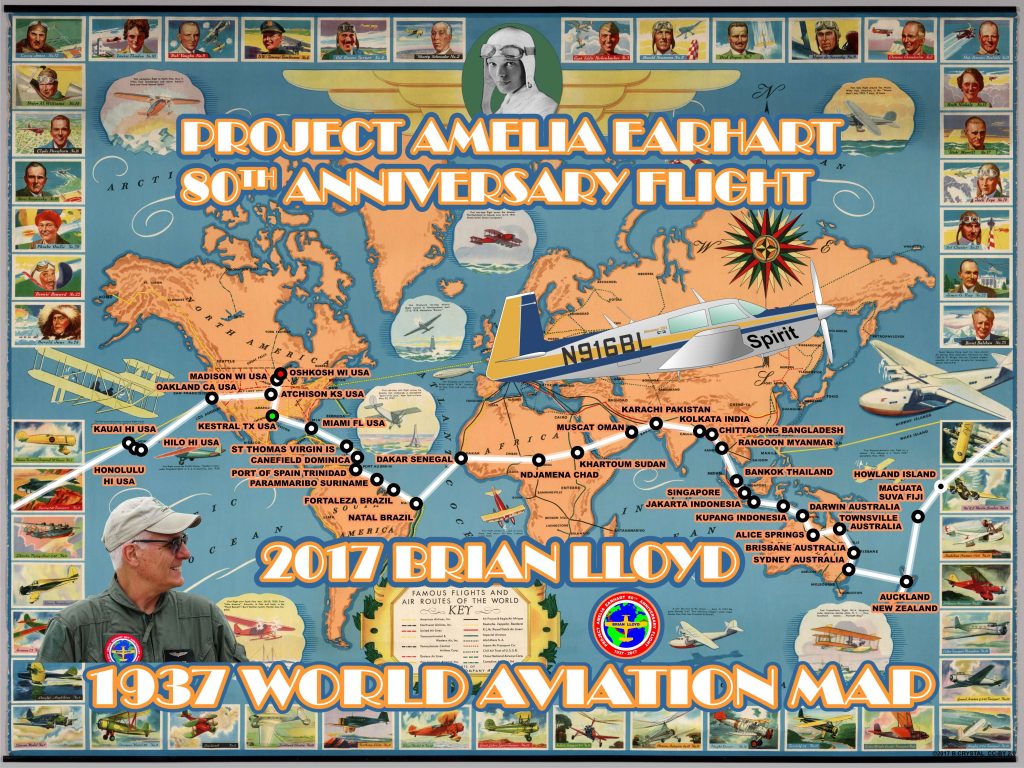 "With Brian now part of the family, we headed to the Territory Day fireworks at East Point Darwin," Birkin reported. For his part, Lloyd expressed gratitude for the hospitality following his 10-hour flight leg from Indonesia.
"With Brian now part of the family, we headed to the Territory Day fireworks at East Point Darwin," Birkin reported. For his part, Lloyd expressed gratitude for the hospitality following his 10-hour flight leg from Indonesia..png) "Many enjoy linking portable Amateur Radio to the navigational beacons for shipping traffic of the past, and in doing so, help raise public awareness of the need to preserve the old structures," Jim Linton, VK3PC, remarked.
"Many enjoy linking portable Amateur Radio to the navigational beacons for shipping traffic of the past, and in doing so, help raise public awareness of the need to preserve the old structures," Jim Linton, VK3PC, remarked..jpg) Sponsors stress that the event is not a contest -- and there are no prizes, certificates, or other enticements to participate. Each station's operators decide how they will operate their station with respect to bands and modes, and participating stations do not have to be on the air for the entire weekend.
Sponsors stress that the event is not a contest -- and there are no prizes, certificates, or other enticements to participate. Each station's operators decide how they will operate their station with respect to bands and modes, and participating stations do not have to be on the air for the entire weekend.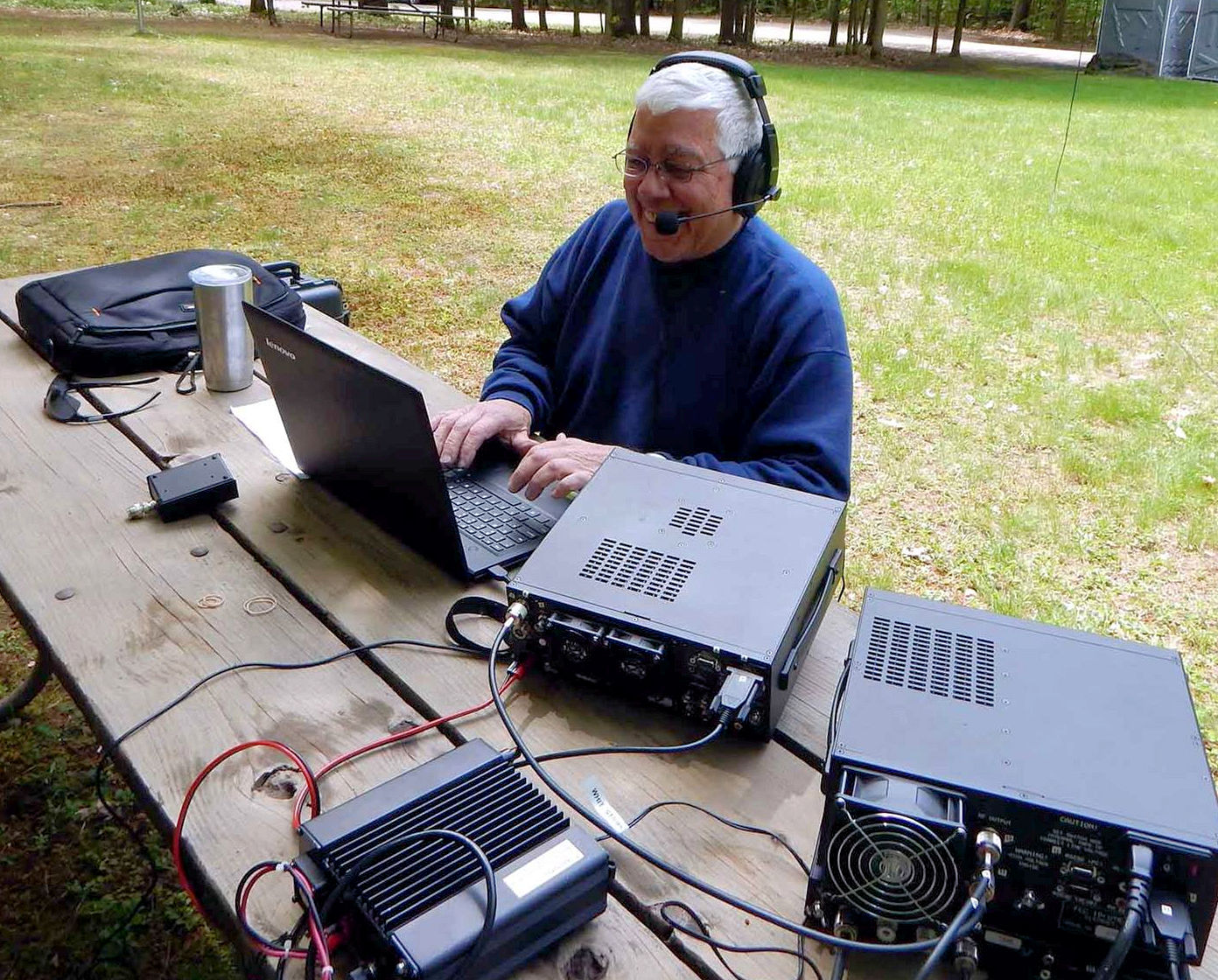
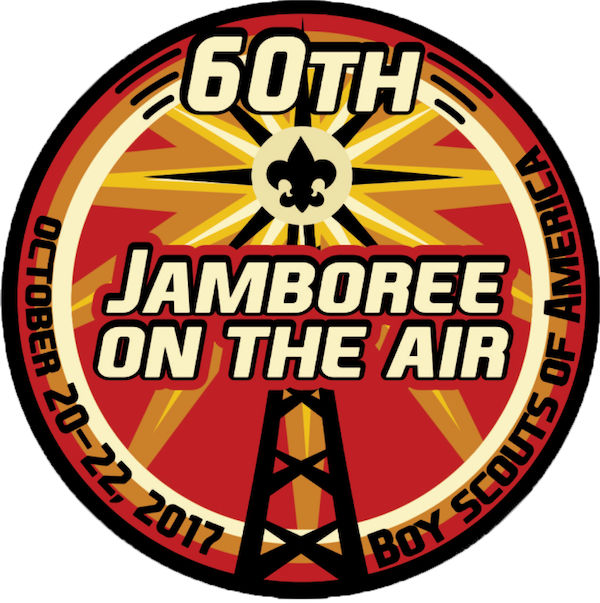 Wilson said JOTA's "communication channels" now include Amateur Radio on the air and via internet-based channels, as well as many other internet-based options, including social media, ScoutLink and IRC chat services, Skype, and more. "It also recognizes the goal of the event -- connecting Scouts so that they can engage in conversations with other Scouts across town and around the world," Wilson said. "This allows them to discover geographic and cultural differences and similarities. Plus, they are exposed to the technology that makes all this happen." The World JOTA-JOTI Team said it would announce "a number of weekend activities supporting the 2017 theme."
Wilson said JOTA's "communication channels" now include Amateur Radio on the air and via internet-based channels, as well as many other internet-based options, including social media, ScoutLink and IRC chat services, Skype, and more. "It also recognizes the goal of the event -- connecting Scouts so that they can engage in conversations with other Scouts across town and around the world," Wilson said. "This allows them to discover geographic and cultural differences and similarities. Plus, they are exposed to the technology that makes all this happen." The World JOTA-JOTI Team said it would announce "a number of weekend activities supporting the 2017 theme."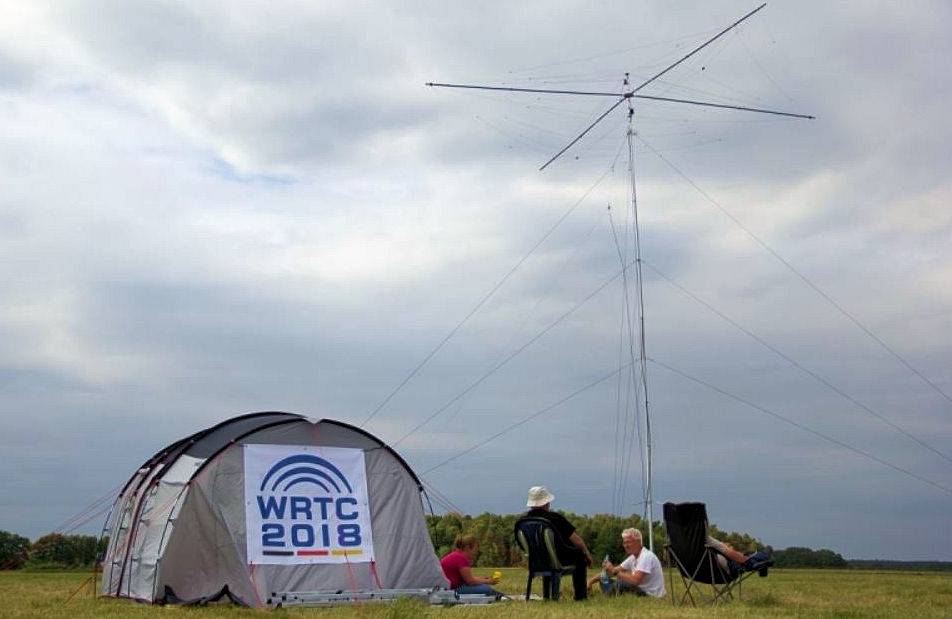 Germany. Organizers said that some familiar faces from the 2016 station tests were once again on board, and many excited contesters, ranging from 20 to 80 years old, looked on. Four transporters were needed to move the necessary materials into place at the 15 sites.
Germany. Organizers said that some familiar faces from the 2016 station tests were once again on board, and many excited contesters, ranging from 20 to 80 years old, looked on. Four transporters were needed to move the necessary materials into place at the 15 sites.  The testing also included a dry run of an online scoreboard, the use of online media such as Hamnet and Facebook, and logistics. WRTC 2018 team member Michael Hoeding, DL6MHW, said the team took notes, compiled a list of some 200 ideas, and suggested a few improvements, "but nothing was critical."
The testing also included a dry run of an online scoreboard, the use of online media such as Hamnet and Facebook, and logistics. WRTC 2018 team member Michael Hoeding, DL6MHW, said the team took notes, compiled a list of some 200 ideas, and suggested a few improvements, "but nothing was critical."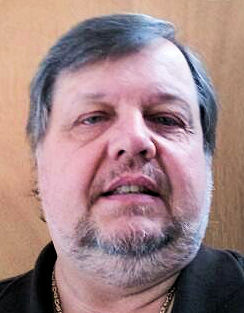 New ARRL Section Manager Appointed in Eastern New York: John Fritze, K2QY, of Delmar, New York, has been appointed ARRL Eastern New York Section Manager, effective on June 29. He takes the reins of the Eastern New York field organization team following the retirement of Pete Cecere, N2YJZ, of Woodstock, who had served as the ENY SM since March 2001. Fritze will complete the remaining term of office, which ends on March 31, 2018.
New ARRL Section Manager Appointed in Eastern New York: John Fritze, K2QY, of Delmar, New York, has been appointed ARRL Eastern New York Section Manager, effective on June 29. He takes the reins of the Eastern New York field organization team following the retirement of Pete Cecere, N2YJZ, of Woodstock, who had served as the ENY SM since March 2001. Fritze will complete the remaining term of office, which ends on March 31, 2018. .jpg) Microwave Update 2017 Issues Call for Papers, Presentations: Microwave Update (
Microwave Update 2017 Issues Call for Papers, Presentations: Microwave Update ( Canada C3 Expedition Award for Hams, SWLs, Announced: Radio Amateurs of Canada (
Canada C3 Expedition Award for Hams, SWLs, Announced: Radio Amateurs of Canada ( Belize, Cyprus, and Philippines Open 60-Meter Bands: Radio amateurs in Belize, Cyprus, and the Philippines now have access to 60-meter bands. In Belize, a secondary allocation of 5,351.5 to 5,366.5 kHz has become available with a maximum EIRP of 25 W. The Cyprus telecoms regulator, the Department of Electronic Communications, on June 30 updated the national frequency table to include the new WRC-15 secondary allocation of 5,351.5 to 5,366.5 kHz with a maximum EIRP of 15 W, as well as the secondary MW allocation of 472 to 479 kHz, with a maximum EIRP of 1 W. The Philippines Telecom Regulator, the National Telecommunications Commission, has granted amateur access to 5,351.5 to 5,366.5 kHz under ITU footnote 5.133B, with a maximum EIRP of 15 W. -- Thanks to Paul Gaskell, G4MWO/The 5 MHz Newsletter
Belize, Cyprus, and Philippines Open 60-Meter Bands: Radio amateurs in Belize, Cyprus, and the Philippines now have access to 60-meter bands. In Belize, a secondary allocation of 5,351.5 to 5,366.5 kHz has become available with a maximum EIRP of 25 W. The Cyprus telecoms regulator, the Department of Electronic Communications, on June 30 updated the national frequency table to include the new WRC-15 secondary allocation of 5,351.5 to 5,366.5 kHz with a maximum EIRP of 15 W, as well as the secondary MW allocation of 472 to 479 kHz, with a maximum EIRP of 1 W. The Philippines Telecom Regulator, the National Telecommunications Commission, has granted amateur access to 5,351.5 to 5,366.5 kHz under ITU footnote 5.133B, with a maximum EIRP of 15 W. -- Thanks to Paul Gaskell, G4MWO/The 5 MHz Newsletter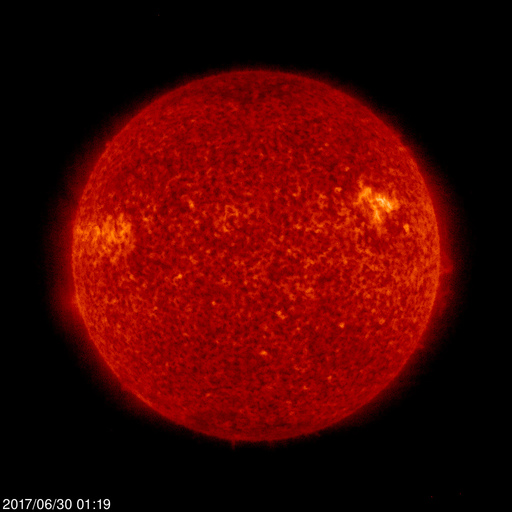 Predicted solar flux is 74 on July 6-7; 75 on July 8-12; 71 on July 13-15; 72 on July 16-19; 71 on July 20-27; 70 on July 28-August 2; 71 on August 3-11, and 72 on August 12-15.
Predicted solar flux is 74 on July 6-7; 75 on July 8-12; 71 on July 13-15; 72 on July 16-19; 71 on July 20-27; 70 on July 28-August 2; 71 on August 3-11, and 72 on August 12-15.







